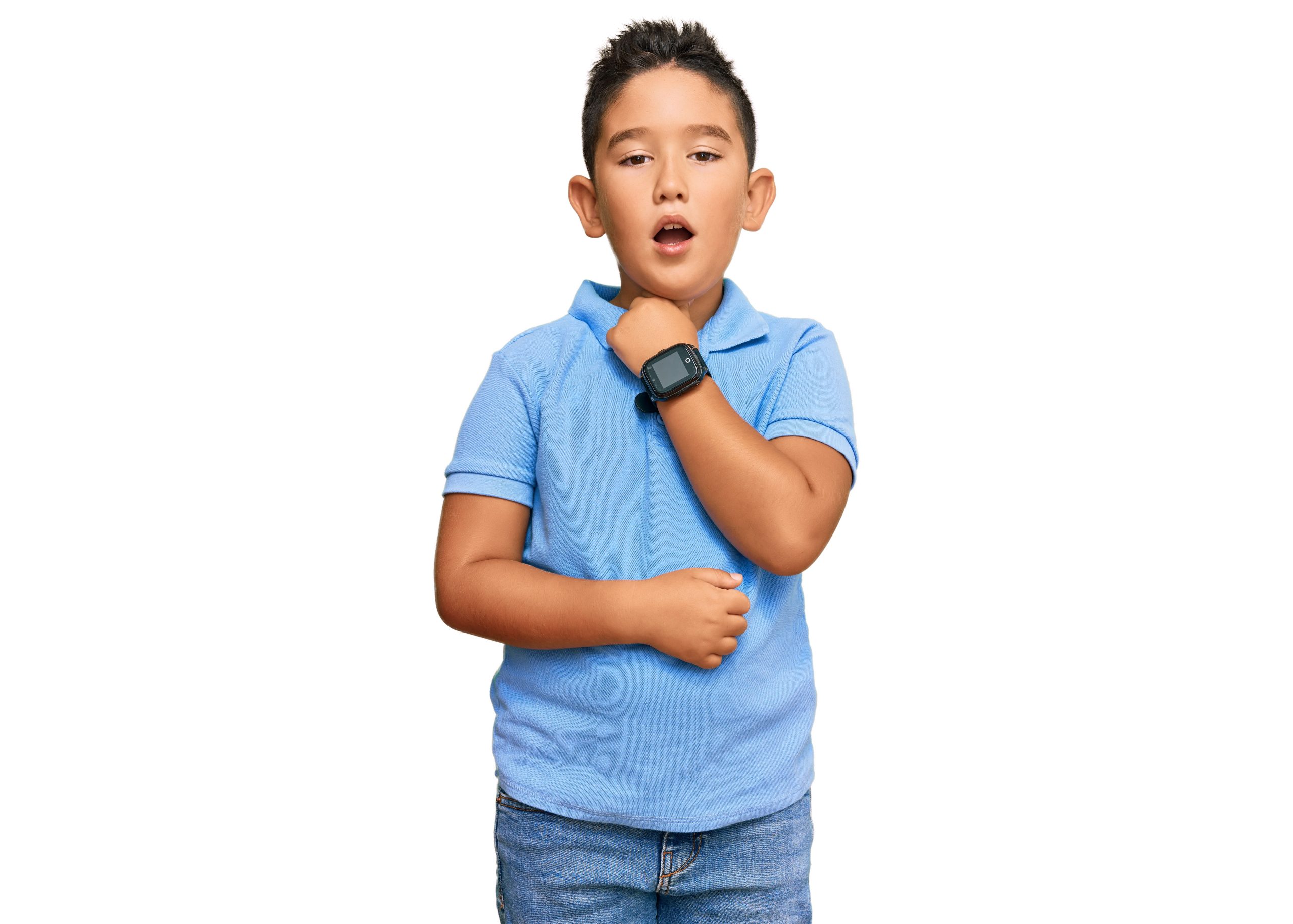Infection
Stay away from one-size-fits-all treatments for pediatric respiratory infections
Little boy touching painful neck: ©Krakenimages.com-stock.adobe.com
Respiratory infections are a leading reason for sick visits in pediatric practice, whether they are caused by bacteria, viruses, or other chronic issues—but how best to treat these infections remains a source of debate, both among health care professions and between parents and physicians.1
Pediatricians know that targeted treatments based on the underlying source of infection or disease process is best when it comes to treating childhood infections,2 but pressure from parents can be difficult to manage when wait-and-see approaches to treatment are indicated.3
There is no single approved treatment for many viral respiratory illnesses in children, but the prevalence and burden of acute viral respiratory infections—sometimes called the common cold—in pediatric practice warrant a closer look at treatment guidelines.
A team of researchers in Switzerland took this challenge, publishing the results of their work in the March 2023 issue of Microorganisms.4
Presentation, progression, and overall impact of respiratory infections can vary based on the virus that caused the illness, the age of the child, and other factors. Treatment decisions are often based on symptoms at presentation, with symptom management being the primary, traditional treatment goal for most children, according to the report. However, underdiagnosis and the presence of asymptomatic infection can also be a problem—especially for children who are vulnerable due to age or special health concerns like immunodeficiency.
There are not “cures” or defined treatments, per se, for every viral respiratory illness, and the specific pathogen isn’t always identified in every respiratory infection. The study notes that coinfections with things like bacterial pneumonia alongside a viral respiratory infection can also complicate diagnosis and management—particularly with a mindset on efforts to control antimicrobial resistance. There is some benefit to taking a symptom-management approach with limited pharmaceutical intervention with many of these illnesses, but data suggests that in some children, infections caused by pathogens like SARS-CoV-2 and respiratory syncytial virus can lead to severe illness, hospitalization and the need for intensive care admission, or even death.
The rate at which these infections lead to severe illness in some children has helped to motivate an increase in research into more aggressive treatment strategies for acute viral respiratory infections, according to the report. Many of these medications help to target and direct immune responses, but broad-spectrum antiviral medications and antibody treatments are also increasingly attractive for these purposes, the researchers note.
As a whole, though, Donna Hallas, PhD, RN, PPCNP-BC, CPNP, PMHS, FAANP, FAAN, a clinical professor and nurse practitioner who has held leadership roles in a number of nursing organizations, says it remains important to make treatment decision based on case-by-case clinical presentation and assessment. This is true regardless of the specific pathogen, Hallas notes, adding that the Microorganisms report is simply a descriptive literature review—not a review of controlled trials—and should be interpreted with caution.
“I agree that children who present with Influenza must be evaluated and treated using the best available evidence in influenza clinical practice guidelines. Children who present with acute respiratory viral infections must be evaluated and most often are referred to an emergency department for management,” Hallas says, adding that the goal of care in infants and children is cough improvement in about a week. She doesn’t, however, agree with the use of over-to-counter cough medications, which the FDA has also warned against.5
Shared-decision making with a trusted provider using patient-specific health factors is the best strategy for approaching most conditions in pediatric practice, adds Jessica Peck, DNP, APRN, CPNP-PC, CNE, CNL, FAANP, FAAN, past president of the National Association of Pediatric Nurse Practitioners, clinical professor of nursing at Baylor University, and a published speaker and author on pediatric health topics.
“Pediatrics is not a one-size-fits-all kind of practice and each child should be appraised individually in a holistic manner, considering all factors influencing their health and recovery,” she says. “It is critical for parents to partner with trusted and credible pediatric health care providers to make evidence-based decisions on treating individual viral infections in a shared decision-making model, leveraging the best available external evidence, patient values and preference, and clinician expertise.”
References
1. Yoong SYC, Ang PH, Chong SL, et al. Common diagnoses among pediatric attendances at emergency departments. BMC Pediatr. 2021;21(1):172. doi:10.1186/s12887-021-02646-8.
2. Centers for Disease Control and Prevention. Pediatric outpatient treatment recommendations. Updated February 2017. Accessed Sept. 24, 2023.
https://www.cdc.gov/antibiotic-use/clinicians/pediatric-treatment-rec.html
3. Albayrak A, Karakaş NM, Karahalil B. Evaluation of parental knowledge, attitudes and practices regarding antibiotic use in acute upper respiratory tract infections in children under 18 years of age: a cross-sectional study in Turkey. BMC Pediatr. 2021;21(1):554. doi:10.1186/s12887-021-03020-4
4. Geppe NA, Zaplatnikov AL, Kondyurina EG, Chepurnaya MM, Kolosova NG. The Common Cold and Influenza in Children: To treat or not to treat? Microorganisms. 2023;11(4):858. doi:10.3390/microorganisms11040858.
5. US Food and Drug Administration. Should you give kids medicine for coughs and colds? Accessed Sept. 24, 2023.
https://www.fda.gov/consumers/consumer-updates/should-you-give-kids-medicine-coughs-and-colds – :~:text=The FDA doesn’t recommend,under 4 years of age.”

